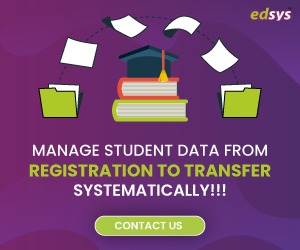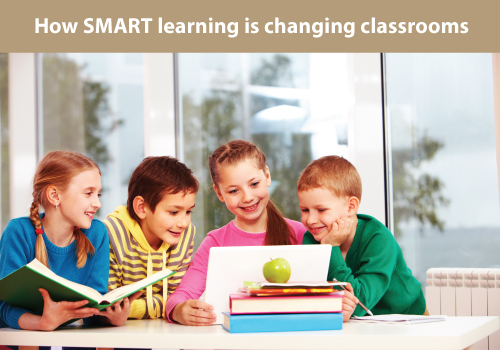Bringing the concept of the age-old radio programs back into the 21st-century, podcasts have lots to cheer for. All thanks to the use of technology in churning out audio presentations of any topic under the sun, a podcast which comes in the form of episodes is a simple and easy-to-use educational tool. Alongside offering invaluable information to listeners, podcasts have gone ahead and become instructional tools in classrooms as well.
If you are curious to know how podcasts can be a good learning tool, here they come.
- The Emerging Popularity of Podcasts Helps Learners and Teachers
The innovative use of technology makes podcasts an indispensable tool for education. Tagged as the latest medium of learning, podcasts have,in the recent past become popular tools promising an impactful push to both students and teachers. Simplifying the job of the teaching staff, podcasts come as a stress-free option to engage students with quality audio content. Students can learn about topics while on the go once they subscribe to a podcast feed. Another primal benefit of podcasts is that these audio presentations can be used for students of different ages; right from schools all the way to universities.
- Portability and Convenience of Learning
Podcasts can be downloaded in your mobiles and can become your tutors in class. Portability and convenience are the two striking advantages of podcasts as with this students can enjoy flexibility in learning. You also have a round-the-clock access to information that is at your fingertips. Given a situation when your faculty is on leave, you can simply bank on this teaching resource and make the most of your free-hour to educate yourself about any topic of interest.
- Auditory Learning – An Impactful Educational Tool Compared to Watching or Reading
While listening to podcasts is one way of learning, recording podcasts also helps students in more ways than one. Students can record podcasts of topic synopses and submit as a group assignment while interviewing their peers about what they understood about a particular topic. Collating all the audio-based information and editing the same will lead to the emergence of a comprehensive educational podcast. Not allowing students to get distracted, podcasts come in as blessings to auditory learners who will start assimilating information by listening attentively.
- Lots of “Behind the Scenes” Activities
A podcast brings out the best in students by mirroring a number of their skills. Along with researching skills, students who record a podcast will also learn how to test it. Once the content is tested, it should be edited before it is finally recorded and ready to be published or promoted. Students who stir up podcasts will be taught the tone of storytelling when they begin to follow a flow of narration. You as a student will be prompted to record a podcast with a strict pattern of an introduction, followed by the explanation, eventually leading to a conclusion. While you are recording a podcast, you are simultaneously honing your communication skills, without the anxiety caused by stage fright. Upon recording multiple podcasts, you can slowly and steadily master the art of public speaking and engage your audience through quality audio content.
- Subject No Bar
If you are of the opinion that podcasts have to be made only in English or any other medium of instruction, think twice. You can churn out a Math podcast by reciting equations loud and clear, so that you can help your students who got struck over a tricky problem. You can share your podcast amongst your friends who are finding it hard to understand scientific concepts and theories. Given the numerous ways in which podcasts help master subjects, teachers also encourage their wards to listen to popular podcasts under various disciplines.
- Student Created Content – The Star Attraction of Podcasts
It is all about having a free hand while learning. Podcasts come in as valuable and interesting learning tools for students through the concept of “Student Created Content”. Allowing you to create your own podcast, you have the luxury of posing questions along with the inclusion of discussions that will help you complete your academic projects and presentations.All in all, podcasts come in as informal educational tools that favor the idea of collective learning.
- Record Your Lectures and Learn At Your Own Pace
Undoubtedly, technology presents innumerable options to all those who wish to think outside the box. Prompting you to record your classroom lectures, a podcast can serve as an “anytime”, “go to” educational material. Tagged as helpful study aids, podcasts help students to prepare better for their exams alongside hand-holding them to grasp a difficult concept that was lectured in the classroom. You simply listen to the recorded podcast, pause when needed and go on to the next topic; at your own pace. Podcasts coming with the options to pause, rewind and replay will come as a blessing to students with learning disabilities.
- A Boon to Students with Mental and Visual Disorders
“Learning through listening” can be the tagline of podcasting. Podcasts can be the best means of education especially for students battling visual and mental disorders. Such kids who are not comfortable with reading can opt for podcasts. Students fighting mental conditions like Dyslexia and ADHD can make the most of modern podcasts as a potent option to do away with the traditional methods of learning.
- A Perfect Option for Absenteeism
There can be a bad day in the life of a student who is unable to attend his/her college or school. In such a case, you can make up for your missed classes by downloading the recordings of the lectures. In this manner, you will be able to plug the gaps that have emerged on account of your non-attendance to school for a day or two. Teachers can record their lectures and hand over the recorded material for the absentees to catch up with the rest of the class.
- Guarantees A Uniform Learning Experience Across Sections
Given the fact that a teacher delivers lectures of the same topic to different classes, podcasts come in as teacher-friendly tools. Allowing the teacher to ensure that every student lays hands on the same explanation that was given by him/her in a particular class, podcasts help deliver “lecture consistency”. Students of different sections who listen to the lectures recorded by their teacher will be on par with each other with the same information being given out.
Wrapping It Up
All in an attempt to help you make the most of your learning experiences, you as a knowledge-seeker are at an advantage to master various subjects through listening. And if you are a teacher ordained to shape the lives of your students, you can bank on podcasts as the best tools that can help them learn effectively, without missing out a thing. To sum it all, podcasts come in as invaluable modern educational tools that can help the teacher and student fraternity in a number of creative ways.













